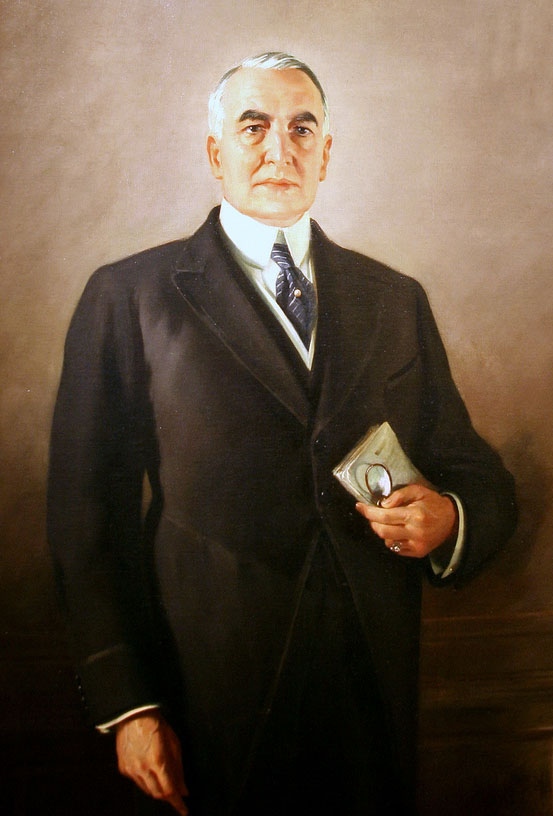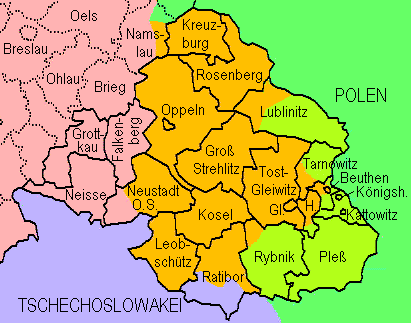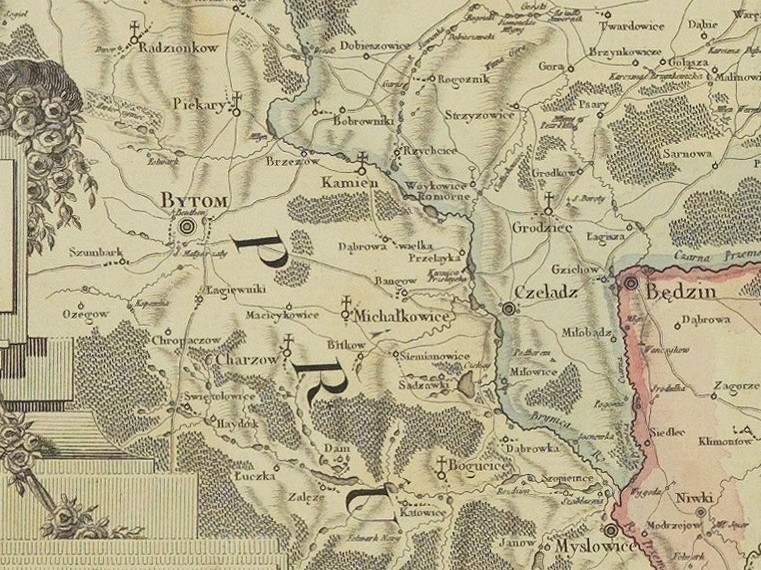|
Chorzów Factory Case
The ''Chorzów Factory'' case () was a case before the Permanent Court of International Justice in 1927. It was an early authority in international law that established a number of precedents in international law. Background In the Upper Silesia plebiscite a majority of 31,864 voters voted to remain in Germany while 10,764 votes were given for Poland. Following three Silesian Uprisings, Silesian uprisings, the eastern part of Upper Upper Silesia, Silesia, including Chorzów and Królewska Huta, was separated from Germany and awarded to Poland in 1922. Migrations of people followed. Because of its strategic value, the case of the nitrogen factory Oberschlesische Stickstoffwerke was argued for years before the Permanent Court of International Justice, finally setting some new legal precedences on what is "just" in international relations. Significance The Court held that: * A State is held responsible for expropriation of alien property * Under international law, a nation is respons ... [...More Info...] [...Related Items...] OR: [Wikipedia] [Google] [Baidu] |
Permanent Court Of International Justice
The Permanent Court of International Justice, often called the World Court, existed from 1922 to 1946. It was an international court attached to the League of Nations. Created in 1920 (although the idea of an international court was several centuries old), the court was initially well-received from states and academics alike, with many cases submitted to it for its first decade of operation. Between 1922 and 1940 the court heard a total of 29 cases and delivered 27 separate advisory opinions. With the heightened international tension in the 1930s, the court became less used. By a resolution from the League of Nations on 18 April 1946, both the court and the league ceased to exist and were replaced by the International Court of Justice and the United Nations. The court's mandatory jurisdiction came from three sources: the Optional Clause of the League of Nations, general international conventions and special bipartite international treaties. Cases could also be submitted directly ... [...More Info...] [...Related Items...] OR: [Wikipedia] [Google] [Baidu] |
International Law
International law, also known as public international law and the law of nations, is the set of Rule of law, rules, norms, Customary law, legal customs and standards that State (polity), states and other actors feel an obligation to, and generally do, obey in their mutual relations. In international relations, actors are simply the individuals and collective entities, such as states, International organization, international organizations, and non-state groups, which can make behavioral choices, whether lawful or unlawful. Rules are formal, typically written expectations that outline required behavior, while norms are informal, often unwritten guidelines about appropriate behavior that are shaped by custom and social practice. It establishes norms for states across a broad range of domains, including war and diplomacy, Trade, economic relations, and human rights. International law differs from state-based List of national legal systems, domestic legal systems in that it operates ... [...More Info...] [...Related Items...] OR: [Wikipedia] [Google] [Baidu] |
Upper Silesia Plebiscite
The Upper Silesia plebiscite was a plebiscite mandated by the Versailles Treaty and carried out on 20 March 1921 to determine ownership of the province of Upper Silesia between Weimar Germany and the Second Polish Republic. The region was ethnically mixed with both Germans and Polish people, Poles. According to prewar statistics, ethnic Poles formed 60 percent of the population. Under the previous rule by the German Empire, Poles claimed they had faced discrimination and had been effectively second-class citizens. The period of the plebiscite campaign and the Allies of World War I, Allied occupation was marked by violence. Silesian Uprisings, Three Polish uprisings occurred, and German volunteer paramilitary units came to the region. The area was policed by French, British and Italian troops and overseen by an Interallied Commission. The Allies planned a partition of the region, but a Polish insurgency took control of over half the area. The Germans responded with the Freikorps ... [...More Info...] [...Related Items...] OR: [Wikipedia] [Google] [Baidu] |
Germany
Germany, officially the Federal Republic of Germany, is a country in Central Europe. It lies between the Baltic Sea and the North Sea to the north and the Alps to the south. Its sixteen States of Germany, constituent states have a total population of over 84 million in an area of , making it the most populous member state of the European Union. It borders Denmark to the north, Poland and the Czech Republic to the east, Austria and Switzerland to the south, and France, Luxembourg, Belgium, and the Netherlands to the west. The Capital of Germany, nation's capital and List of cities in Germany by population, most populous city is Berlin and its main financial centre is Frankfurt; the largest urban area is the Ruhr. Settlement in the territory of modern Germany began in the Lower Paleolithic, with various tribes inhabiting it from the Neolithic onward, chiefly the Celts. Various Germanic peoples, Germanic tribes have inhabited the northern parts of modern Germany since classical ... [...More Info...] [...Related Items...] OR: [Wikipedia] [Google] [Baidu] |
Poland
Poland, officially the Republic of Poland, is a country in Central Europe. It extends from the Baltic Sea in the north to the Sudetes and Carpathian Mountains in the south, bordered by Lithuania and Russia to the northeast, Belarus and Ukraine to the east, Slovakia and the Czech Republic to the south, and Germany to the west. The territory has a varied landscape, diverse ecosystems, and a temperate climate. Poland is composed of Voivodeships of Poland, sixteen voivodeships and is the fifth most populous member state of the European Union (EU), with over 38 million people, and the List of European countries by area, fifth largest EU country by area, covering . The capital and List of cities and towns in Poland, largest city is Warsaw; other major cities include Kraków, Wrocław, Łódź, Poznań, and Gdańsk. Prehistory and protohistory of Poland, Prehistoric human activity on Polish soil dates to the Lower Paleolithic, with continuous settlement since the end of the Last Gla ... [...More Info...] [...Related Items...] OR: [Wikipedia] [Google] [Baidu] |
Silesian Uprisings
The Silesian Uprisings (; ; ) were a series of three uprisings from August 1919 to July 1921 in Upper Silesia, which was part of the Weimar Republic at the time. Ethnic Polish and Polish-Silesian insurrectionists, seeking to have the area transferred to the newly founded Polish Republic, fought German police and paramilitary forces which sought to keep the area part of the new German state founded after World War I and the subsequent revolutions in Germany. Following the conflict, the area was divided between the two countries. The rebellions have subsequently been commemorated in modern Poland as an example of Polish nationalism. Despite central government involvement in the conflict, Polish historiography renders the events as uprisings reflecting the will of ordinary Upper Silesians rather than a war. In total, several thousand people may have died violently in the militant clashes in Upper Silesia between 1919 and 1921. About four fifths of the victims were killed during th ... [...More Info...] [...Related Items...] OR: [Wikipedia] [Google] [Baidu] |
Upper Silesia
Upper Silesia ( ; ; ; ; Silesian German: ; ) is the southeastern part of the historical and geographical region of Silesia, located today mostly in Poland, with small parts in the Czech Republic. The area is predominantly known for its heavy industry (mining and metallurgy). Geography Upper Silesia is situated on the upper Oder River, north of the Eastern Sudetes mountain range and the Moravian Gate, which form the southern border with the historic Moravia region. Within the adjacent Silesian Beskids to the east, the Vistula River rises and turns eastwards, the Biała and Przemsza tributaries mark the eastern border with Lesser Poland. In the north, Upper Silesia borders on Greater Poland, and in the west on the Lower Silesian lands (the adjacent region around Wrocław also referred to as Middle Silesia). It is currently split into a larger Polish and the smaller Czech Silesian part, which is located within the Czech regions of Moravia-Silesia and Olomouc. The P ... [...More Info...] [...Related Items...] OR: [Wikipedia] [Google] [Baidu] |
Chorzów
Chorzów ( ; ; ) is a city in the Silesia region of southern Poland, near Katowice. Chorzów is one of the central cities of the Metropolis GZM – a metropolis with a population of 2 million. It is located in the Silesian Highlands, on the Rawa River (a tributary of the Vistula River, Vistula). Administratively, Chorzów is in the Silesian Voivodeship since 1999, previously Katowice Voivodeship, and before then, the Silesian Voivodeship (1920–1939), Silesian Voivodeship. Chorzów is one of the cities of the 2.7 million conurbation – the Katowice urban area and within a greater Katowice-Ostrava metropolitan area with a population of about 5,294,000 people. The population within the city limits is 105,628 as of December 2021. Chorzów is particularly known as the location of the Silesian Stadium, one of the largest and historically most important stadiums in Poland. Ruch Chorzów, one of the most accomplished Polish football clubs, is based in the city. History City name The ... [...More Info...] [...Related Items...] OR: [Wikipedia] [Google] [Baidu] |
Królewska Huta
Królewska may refer to: Villages in Poland: * Bokinka Królewska, in Gmina Tuczna, within Biała Podlaska County, Lublin Voivodeship * Brzóza Królewska, in Gmina Leżajsk, within Leżajsk County, Subcarpathian Voivodeship * Brzeziny, Gmina Lubycza Królewska, in Gmina Lubycza Królewska, within Tomaszów Lubelski County, Lublin Voivodeship * Dąbrówka Królewska, in Gmina Gruta, within Grudziądz County, Kuyavian-Pomeranian Voivodeship * Kalinówka Królewska, in Gmina Jasionówka, within Mońki County, Podlaskie Voivodeship * Kamienica Królewska, in Gmina Sierakowice, within Kartuzy County, Pomeranian Voivodeship * Klwatka Królewska, in Gmina Gózd, within Radom County, Masovian Voivodeship * Kniazie, Gmina Lubycza Królewska, in Gmina Lubycza Królewska, within Tomaszów Lubelski County, Lublin Voivodeship * Królewska Wola, in Gmina Międzybórz, within Oleśnica County, Lower Silesian Voivodeship * Lubycza Królewska, in Tomaszów Lubelski County, Lublin Voivodeship * Modł ... [...More Info...] [...Related Items...] OR: [Wikipedia] [Google] [Baidu] |
International Relations
International relations (IR, and also referred to as international studies, international politics, or international affairs) is an academic discipline. In a broader sense, the study of IR, in addition to multilateral relations, concerns all activities among states—such as war, diplomacy, trade, and foreign policy—as well as relations with and among other international actors, such as intergovernmental organizations (IGOs), international nongovernmental organizations (INGOs), international legal bodies, and multinational corporations (MNCs). International relations is generally classified as a major multidiscipline of political science, along with comparative politics, political methodology, political theory, and public administration. It often draws heavily from other fields, including anthropology, economics, geography, history, law, philosophy, and sociology. There are several schools of thought within IR, of which the most prominent are realism, l ... [...More Info...] [...Related Items...] OR: [Wikipedia] [Google] [Baidu] |
International Law
International law, also known as public international law and the law of nations, is the set of Rule of law, rules, norms, Customary law, legal customs and standards that State (polity), states and other actors feel an obligation to, and generally do, obey in their mutual relations. In international relations, actors are simply the individuals and collective entities, such as states, International organization, international organizations, and non-state groups, which can make behavioral choices, whether lawful or unlawful. Rules are formal, typically written expectations that outline required behavior, while norms are informal, often unwritten guidelines about appropriate behavior that are shaped by custom and social practice. It establishes norms for states across a broad range of domains, including war and diplomacy, Trade, economic relations, and human rights. International law differs from state-based List of national legal systems, domestic legal systems in that it operates ... [...More Info...] [...Related Items...] OR: [Wikipedia] [Google] [Baidu] |
Sources Of Law
Sources of law are the origins of laws, the binding rules that enable any state to govern its territory. The terminology was already used in Rome by Cicero as a metaphor referring to the "fountain" ("fons" in Latin) of law. Technically, anything that can create, change, or cancel any right or law is considered a source of law. The term "source of law" may sometimes refer to the sovereign or to the seat of power from which the law derives its validity. Legal theory usually classifies them into formal and material sources, although this classification is not always used consistently. Normally, formal sources are connected with what creates the law: statutes, case law, contracts, and so on. In contrast, material sources refer to the places where formal law can be found, such as the official bulletin or gazette where the legislator publishes the country's laws, newspapers, and public deeds. Following the Aristotelian notion of the four causes (material, formal, efficient, and final ... [...More Info...] [...Related Items...] OR: [Wikipedia] [Google] [Baidu] |






